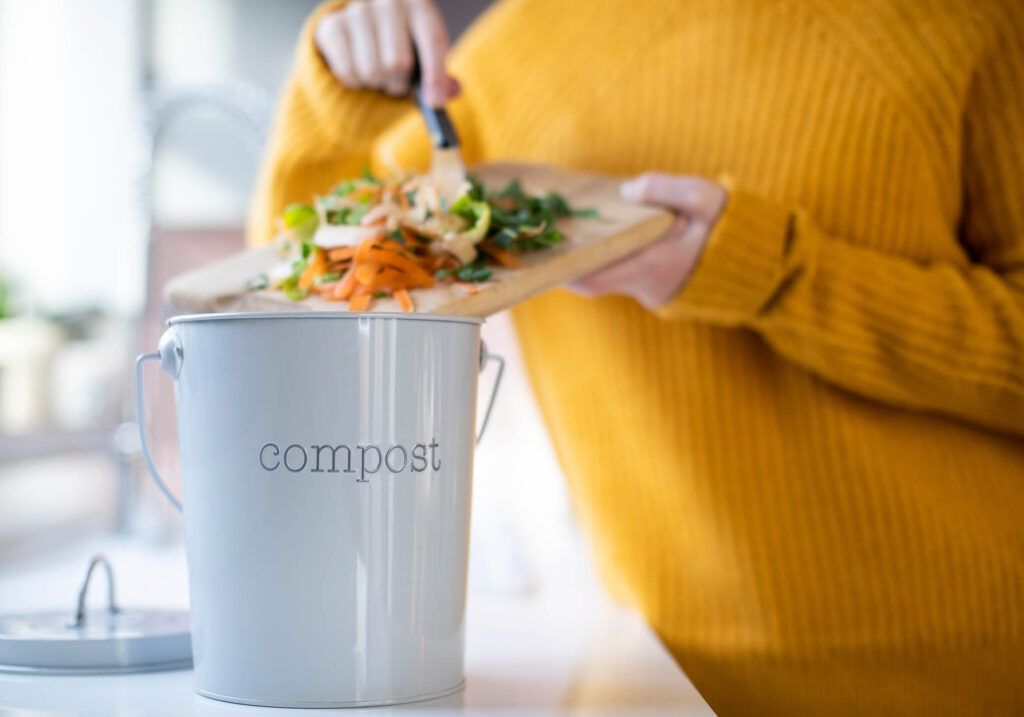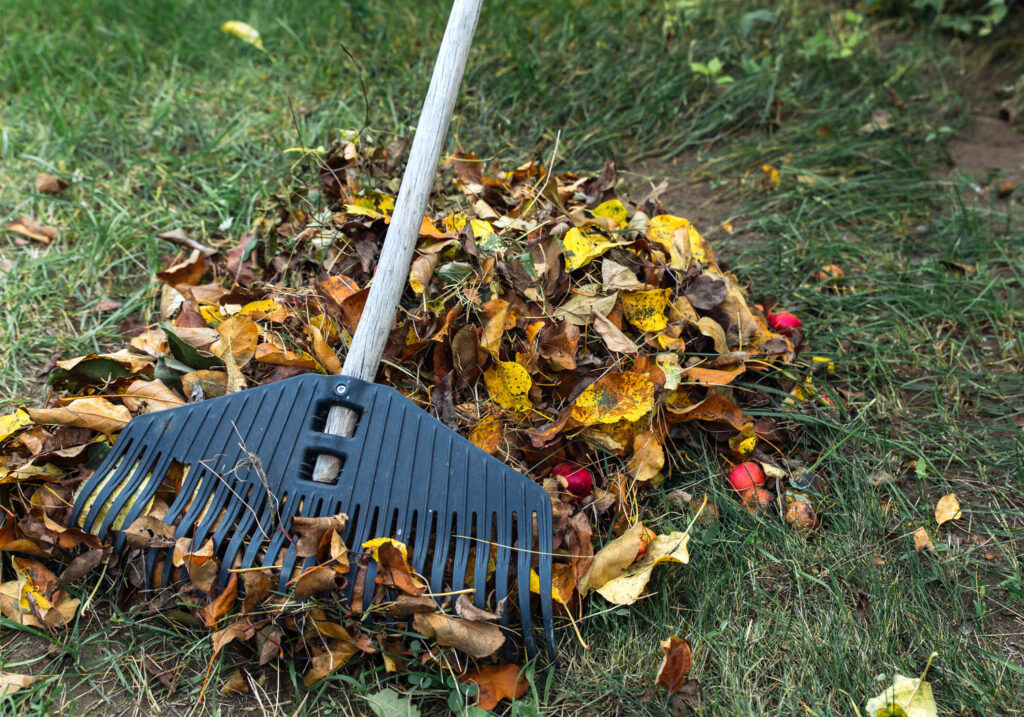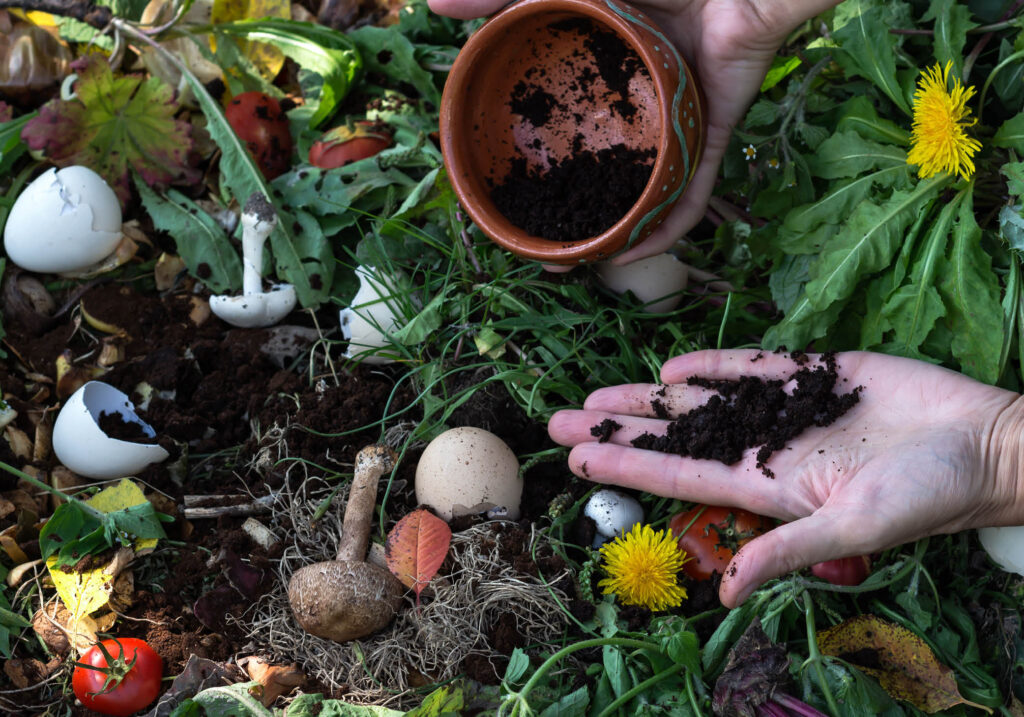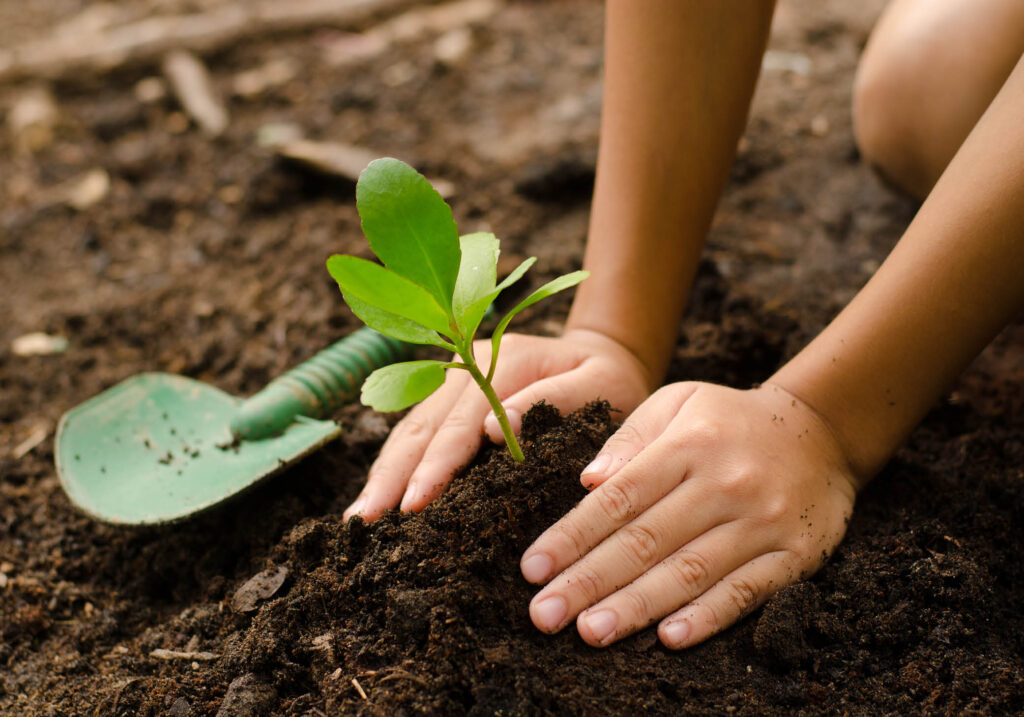
Making a compost pile in your yard yields one of the most effective and affordable tools for gardeners looking for eco-friendly alternatives to using harmful chemical fertilizers. Even better news – composting is easy. By reducing your yard and household waste, you can create the perfect, nitrogen-rich soil for thriving flower and vegetable gardens for free! So, read on for some of our favorite tips for how to make a compost pile in your yard.

Green Compost Materials
As you start the planning to make a compost pile in your yard, note that you will need to create a blend of biodegradable matter that falls into “green” or “brown” categories. Your kitchen is likely to be the primary source of green material, which is typically food waste like vegetable peels, fruit scraps, and coffee grounds.
Is all kitchen waste suitable for composting? No. Try to avoid oily foods or meat and dairy. Why? EatingWell explains: “animal products such as dairy, bones, and meat, … can attract pests,” and food like “mayonnaise, peanut butter, salad dressing or vegetable oils” can present difficulties during decomposition. Fish should not be composted either.
Experts are often asked if the green material that is sourced from the kitchen should only be organic. While that is a great goal, don’t feel pressured to throw out viable produce scraps just because they weren’t organic. The next time you shop, Real Simple suggests that you “look for ‘pesticide-free’ signage even more so than ‘organic’ labels.”
Also, before you toss your banana peel or leftover store-bundled greens into the compost pile, be sure to check them over. Real Simple warns: “If you’re making the effort to compost, take extra care that scraps (fruit and veggie peels, and paper bags) are free of labels, twist ties, rubber bands, and other synthetic, non-biodegradable parts.”
Yard waste can also be part of your green supplies. Are you looking for a good use for your grass clippings? Keep them for your yard’s compost pile. Are you forever pulling weeds from your garden? The good news is that your compost pile will thank you for them.

Brown Compost Elements
Brown compost materials include carbon-rich elements like wood chips, straw, and pieces of bark. Martha Stewart Living reveals: “Newspaper and hay make good brown matter,” but be sure to shred the newspaper so that “it doesn’t form a mat” and “avoid glossy or colored paper.” Falling autumn leaves can be one of the most readily available forms of carbon available. And the leaves are free! Martha Stewart Living offers this helpful tip for leaf-gatherers: “Since they’re abundant for a short time, … stock up once they fall and use them throughout the winter.”
Do you know those cardboard pizza boxes that you cannot place in your blue recycling bins? Good news! As long as you rip the boxes into small pieces, the experts at EatingWell give the thumbs up to including them as your brown compost materials.

A Shovel-Full of Neutral Soil
While not absolutely necessary for starting the composting process, Martha Stewart Living does recommend having at least a small supply of neutral soil on hand. They reason that when neutral soil is added to the middle of the compost pile in your yard, it “helps to protect the compost while supplying the organisms needed for the breakdown process.”
Cold Composting Method
Cold composting, also known as anaerobic composting, is often the easiest and cheapest way to begin to make a compost pile in your yard. The actual method is quite simple. As EatingWell advises: “[Anaerobic composting] involves piling the greens and browns and letting nature handle the decomposition process unaided.” While the compost pile should not smell particularly intense, there will be decay, so choose a spot away from your home and your yard’s leisure spaces, just in case. And although starting a composting pile takes relatively little time, the entire decomposition process using cold composting can take up to two years.
Aerobic Composting
Aerobic composting is very similar to the cold composting approach, but it requires an infusion of oxygen into the process, which increases the internal temperature of the pile. The higher temperature then speeds up the decomposition process. While this sounds like it could be time-consuming, it really isn’t. According to EatingWell, this just “requires turning (or mixing) the materials every so often to give it exposure to oxygen.” A standard garden shovel will do the trick.
How to Make a Compost Pile in Your Yard
Start by laying down a bottom layer of your brown materials. Because this forms your base, you’ll want it wide enough to support the layers above it without collapse. The next section should be from your collection of green biodegradable material. Expert gardener and herbalist Leslie Bish recommended to Real Simple that the general composting rule is to employ a “two-to-one ratio of brown to green materials” as you build the pile. When you reach what is projected to be the middle of your compost pile, shovel in a small amount of neutral soil.
Your yard’s compost pile should be kept damp, but you do not want it to be waterlogged. Heavy bouts of rain can not only impede decomposition but displace some of your biodegradable material. The last thing you want is for your pile to fall and spread to other areas of your yard. If you live in a region with abundant rainfall, consider putting up a protective tarp to keep the pile from being soaked. The pros at EatingWell also suggest “[adding] sawdust to dry it” as needed.
If it looks like your compost pile is not beginning the decomposition process after a reasonable amount of time, it might need some attention. Leslie Bish advised Real Simple that in these cases, “‘It might be too dry, or not have enough nitrogen, so add a little water with the hose and more green material.’”

When is the Compost Pile Ready For Use?
If you chose the turning (aerobic) method for maintaining your compost pile, you might have compost ready for use within six months unless you experience a sustained winter. Cold compost piles can take up to two years before they are viable as organic fertilizer. In general, Martha Stewart Living recommends not using the compost until it is “dark brown, free of recognizable ingredients, and safe to smell.” While you might be eager to start using your new soil enhancer, it is essential to wait until decomposition is finished. Otherwise, professionals warn, it could prove dangerous to your trees or garden plants.
The post How to Make a Compost Pile appeared first on Better Homes and Gardens Real Estate Life.

 Facebook
Facebook
 X
X
 Pinterest
Pinterest
 Copy Link
Copy Link


